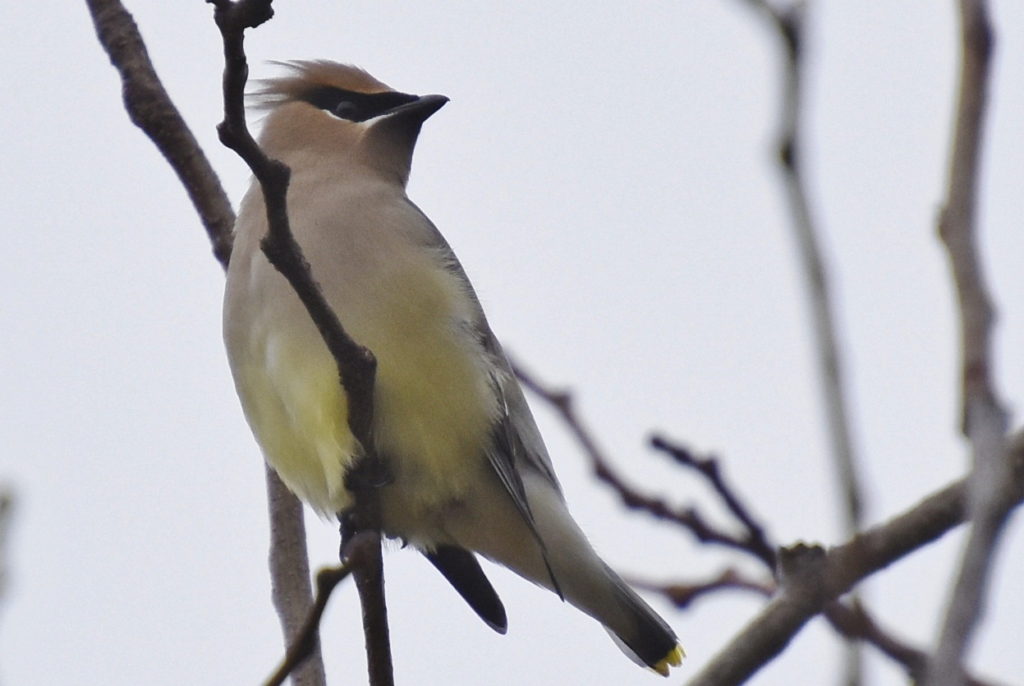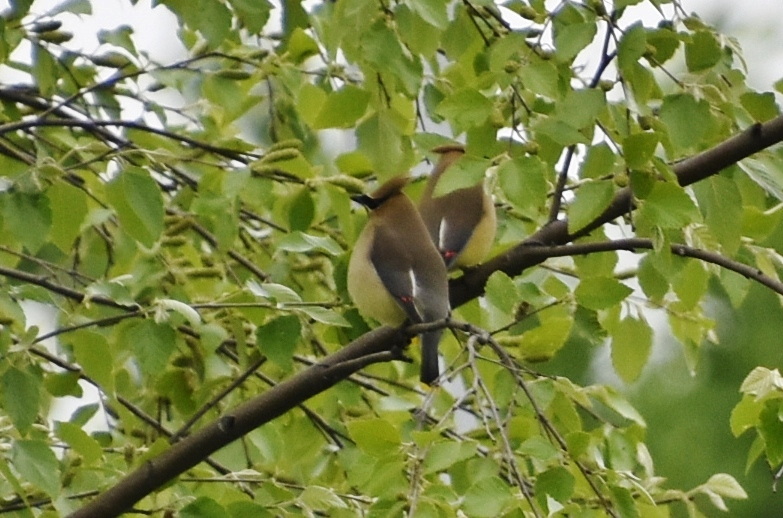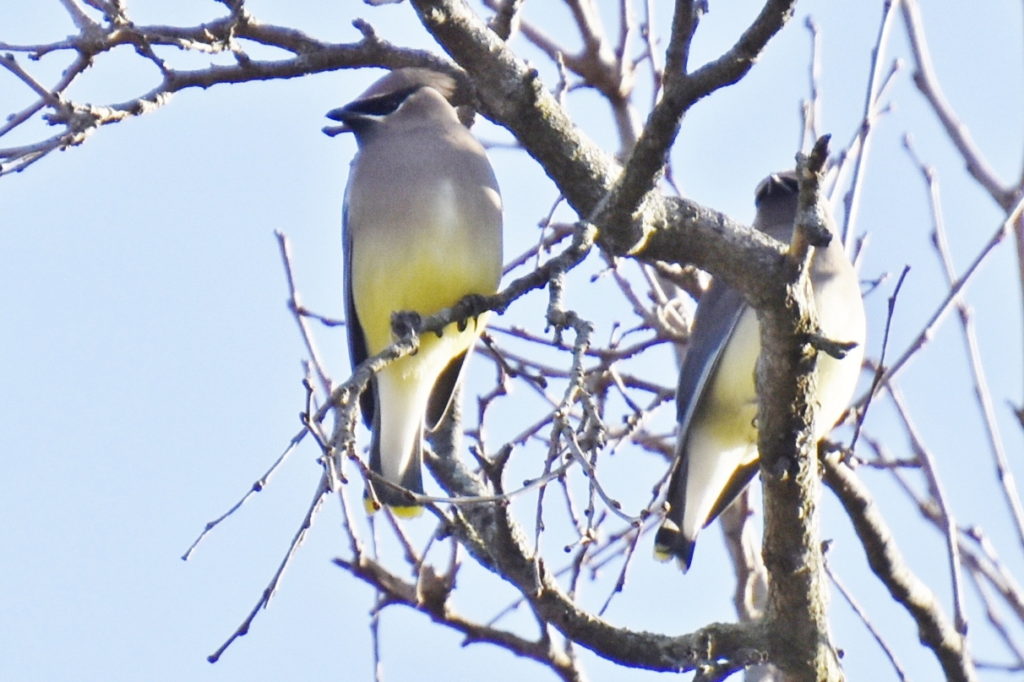Everyone's Favorite Bird
There are two species of Waxwings in North America. The most widely distributed, and the one we are most apt to see, is the Cedar Waxwing. Its close relative, the Bohemian Waxwing, is almost exclusively a western bird that winters in the Rocky Mountain states and breeds in northern Canada and Alaska. Both birds are extremely gregarious, and often occur in flocks. They are also, like the Snowy Owl, irruptive birds. That is, their abundance can vary greatly from year to year depending on the adequacy of their food supply. They may be very common one year and very scarce the next.
The Cedar Waxwing is an easy bird to identify with its cardinal-like crest, narrow black facial mask that extends slightly on to the throat, yellow tail tip, a yellowish belly and bright red tips on their secondary feathers that can sometimes be seen in the sitting bird. They are the only birds in North American that show a brilliant yellow terminal band on their tails. Another identification bonus is the similar plumage of males and females.
Waxings have been reported recently in small flocks, in trees in our meadow at Lumberton Leas. Overall they favor open woodland areas, orchards and fruiting trees. They are voracious eaters of berries, and will often descend on trees like hollies, juniper and wild cherry, and strip them of their fruit. While their diet consists mostly of fruit, during the summer they will also eat insects and feed their young with this high-protein food.
The vocalization of the Cedar Waxwing is a distinctive and very high pitched “tseee”. The high frequency range makes it hard to hear a single bird, but you have a much better chance of hearing it when a flock is calling.
All photographs and text by Robert Koch. Photographs were all taken around the Lumberton Leas meadow.



